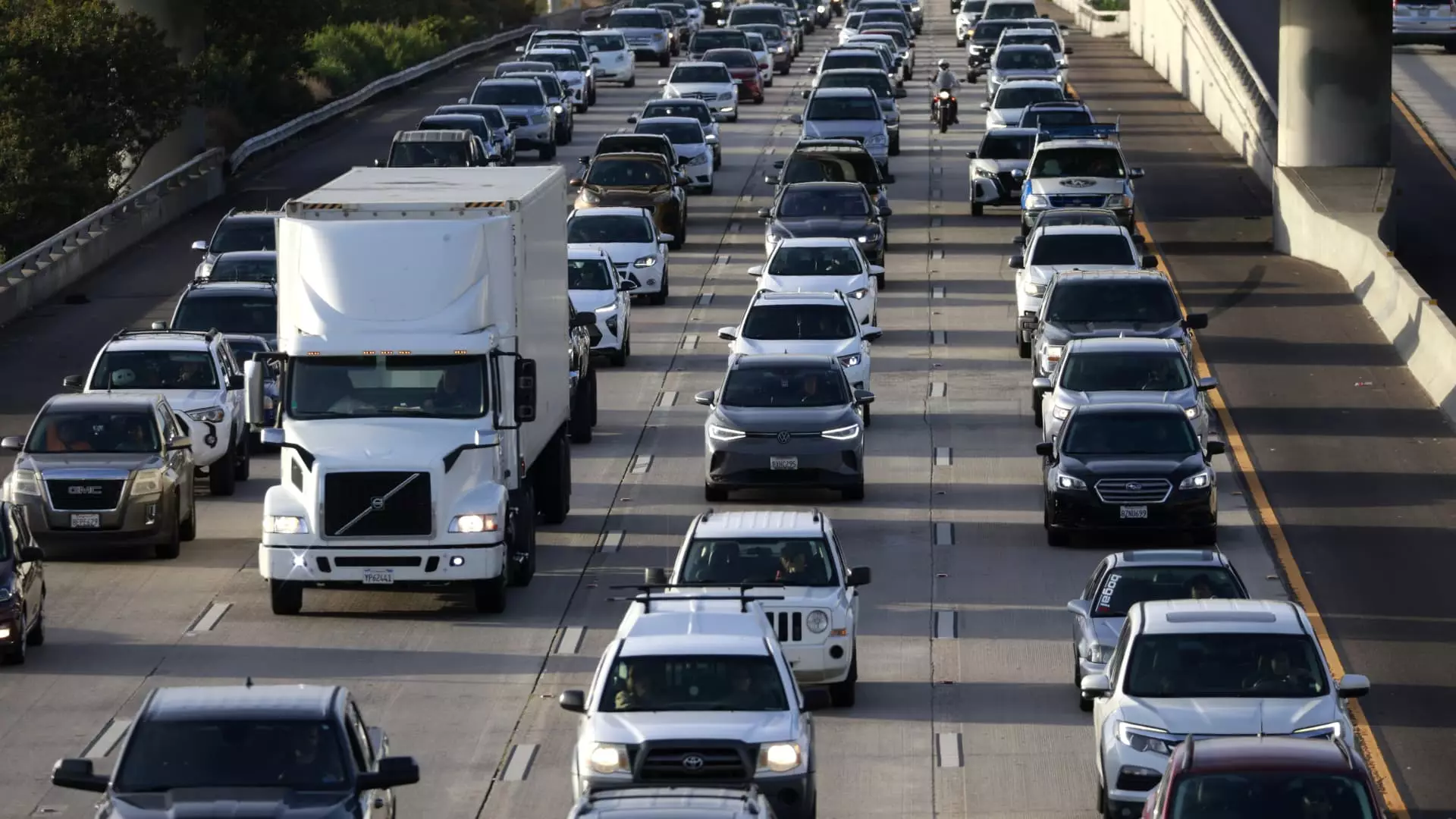The traditional American 9-to-5 workday is quickly becoming a thing of the past. According to the 2023 Global Traffic Scorecard released by INRIX Inc., the standard 40-hour workweek has transformed into a 10-to-4 schedule. This shift is largely attributed to the rise of flexible working arrangements that have been adopted by more commuters in recent years. The report highlights that there is now a “midday rush hour” with a significant increase in office trips being made at noon compared to the pre-pandemic traffic patterns. Bob Pishue, a transportation analyst, notes that there is less morning and evening commute activity and a higher volume of afternoon trips, indicating a new normal in the way we approach work hours.
Another notable trend is the decline in public transportation usage among commuters. Data from the Federal Reserve Bank of St. Louis shows a significant drop in ridership during the pandemic, which has not fully recovered since then. As a result, there has been a surge in traffic congestion during the peak midday and evening hours. Pishue describes how the traditional peak hours of morning and evening rush have now merged, with no valleys in between. This shift away from public transportation suggests that employees are seeking alternative ways to commute to work, aligning with the broader trend towards flexibility in work arrangements.
The practice of “coffee badging,” where employees only spend a few hours in the office each day, has become increasingly common. Hybrid workers, who divide their time between remote and in-office work, often check in at the office for short periods before heading out. This behavior has been accepted and tolerated by many organizations, reflecting a greater emphasis on flexibility and autonomy in how work is carried out. Reports from Owl Labs indicate that 58% of hybrid employees engage in coffee badging, showcasing a growing shift in the way work hours are structured and perceived.
Employee burnout and decreased commitment to work have become pressing issues in today’s workforce. Despite efforts to improve workplace engagement, surveys show that only one-third of employees feel engaged in their work and workplace. A Gallup poll revealed that a significant portion of employees are either not engaged or actively disengaged, leading to a loss of productivity estimated at $1.9 trillion nationwide. This decline in engagement is linked to a greater focus on work-life balance, flexible hours, and mental health support over career advancement. Employees are increasingly prioritizing their well-being and personal time, leading to a reluctance to spend more hours than necessary at the office.
As the landscape of the nine-to-five workday continues to evolve, there is a growing need to redefine productivity and work design. Lynda Gratton, a management professor, emphasizes the importance of creating clear expectations between organizations and employees. She notes that the practice of coffee badging, where employees commute to the office but do not put in significant hours, is not an effective compromise. This trend highlights the need for a more strategic approach to work arrangements that prioritize individual productivity and well-being. Organizations that fail to adapt to these changing dynamics risk losing valuable talent and productivity in the long run.
The traditional nine-to-five workday is undergoing a significant transformation due to shifting attitudes towards work hours, commute patterns, and employee engagement. The rise of flexible working arrangements, the decline in public transportation usage, and the prevalence of coffee badging reflect a broader shift towards autonomy and work-life balance among workers. As organizations navigate these changes, there is a growing emphasis on redefining productivity, engagement, and work design to meet the evolving needs of employees in the modern workforce.

